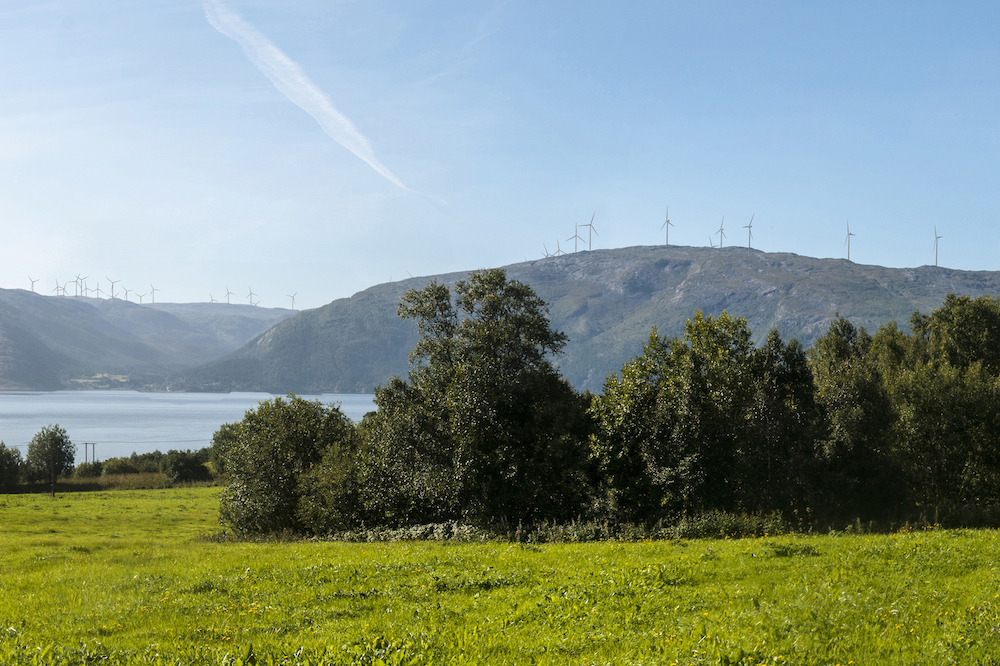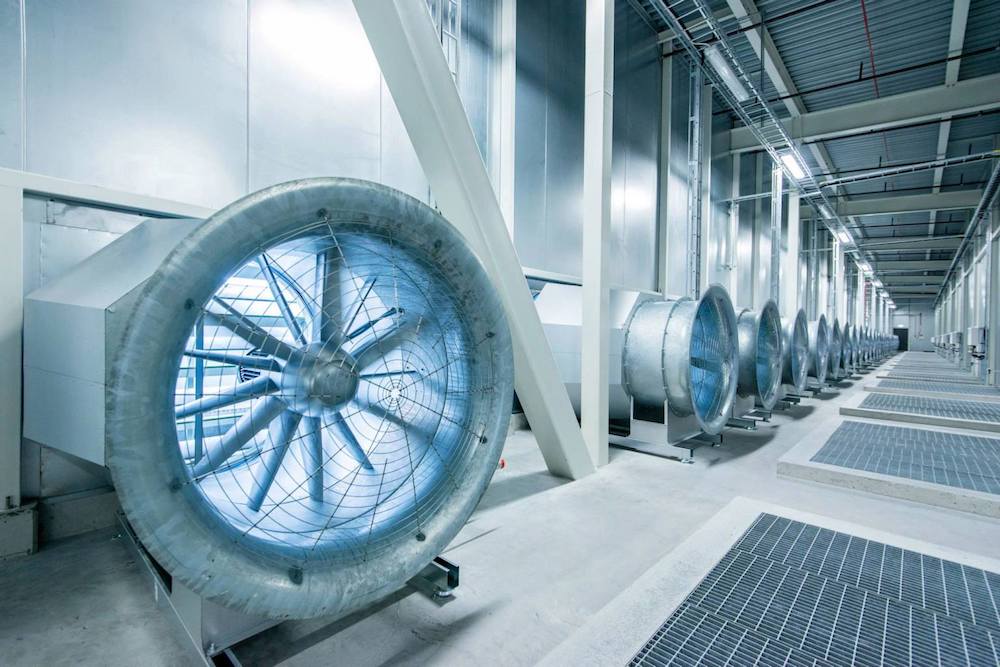Arctic Europe shows that remoteness doesn’t have to hinder renewable energy growth
Northern regions can benefit from their location when it comes to renewable energy, rather than be hurt by it.

Arctic renewable energy has the potential for a global impact, but stories of energy transformation in the region are often overshadowed. For the month of September, ArcticToday is launching a special focus on renewable energy in the Arctic and this piece is part of that coverage. Find the full series here, or subscribe to our daily newsletter and follow us on Facebook and Twitter to be the first to read new installments.
The story of renewable energy in the European Arctic is one that begins with abundance.
The northern parts of Norway, Sweden and Finland, produce about a third more energy than they need. Most contributes little or nothing to global warming: some 80 percent of the power the region produces comes from hydroelectric and another 10 percent from wind power. Despite other environmental and social concerns, both are considered to be renewable.
According to Business Index North, the northern parts of the three countries produce 25 percent of the region’s hydroelectric power and 25 percent of its wind power. The region’s share of wind power production fell between 2014 and 2017, but that is because total capacity expanded faster. In general, the northern parts of the three countries produce comparatively more power than other parts do.

What doesn’t get used locally gets sent to population centres in the south. In that respect, the Nordic Arctic is not unique; Hydro-Québec, a Canadian power company, for example, has been helping to keep the lights on in cities in the northeastern U.S. since 1910. That shows the model can be repeated, but transmission to more populated regions is only part of the story.
In conventional energy export, be it internally or across borders, power is shipped from one place to another aboard tankers, through pipelines or over transmission lines. But, if you use internet services, especially Facebook, (and depending on where the data you are accessing are stored), the Nordic countries may be exporting their renewable power to you — but in the form of data, rather than electricity.
Since 2013, Facebook has maintained a server farm in Luleå, Sweden. The city was chosen from a field of over a hundred as the site of the first European facility to house the computers that store user information for two main reasons: its cold climate and a stable supply of renewable energy.
Today, Luleå is home to 18 server farms. More are in their way, in Sweden and in the rest of the Nordic Arctic, where at least 10 could be built the coming years. For Luleå, the industry’s arrival, and the 4,000 jobs it sustains, has contributed to increasing prosperity in the city and the surrounding area; it is now second only to Stockholm in terms of contribution to Sweden’s overall economic output, according to Business Sweden.
Clean energy is only one part of the reason why tech firms have fallen in love with Nordic countries. Things like education (Luleå is home to a university), transmission infrastructure (built to service industrial producers) and stable governance make the region “a highly attractive destination for power-intensive industries”, according to Business Index North. Cold weather, which reduces cooling needs, is another reason.
But those factors can be found in a lot of places, though. And unlike the North, those places tend to be larger population centers with closer links to other population centers. This is a particular concern for telecommunications industries, since it means added distance, and added distance means added time to send information to users — if only fractions of seconds. And telecommunications infrastructure in the North is less robust than in areas where there are lots of people.
Despite these drawbacks, part of the reason why the North is attractive to the tech industry anyway is, according Alexandra Middleton, an academic with the University of Oulu, because being located there allows them to respond to pressure to address climate change.
“Businesses of all sorts are looking for places where they can find green energy, and the Arctic regions of Norway, Sweden and Finland can offer them that,” she says.
Adding to the story is the economic benefit of using energy locally to produce items for export. In Sweden, hydropower may help its steel plants stay competitive. It can also be packaged up as batteries for use in things like electric cars. The jobs and other activities these firms create, according to Middleton, helps the region get more out of its energy.

Iceland provides a similar example.
Most people can name its two biggest exports. If you were in doubt, they are tourism (42 percent) and fish (17 percent). The third? Aluminium, at 16 percent. This despite the country having no deposits of bauxite (the ore used to produce aluminium).
What Iceland does have is a lot of the other thing it takes to a lot of to run an aluminium smelter: electricity — or, more precisely, the capacity to expand generating capacity without importing energy resources.
Landsvirkjun, the national power company, describes Iceland’s renewable energy resources — in the form of hydroelectric and geothermal — as mostly untapped, meaning that it can build out power-generation capacity if a high-demand customer has a need for it. This happened in 2008 when Aloca, an American firm, was looking to expand its smelting capacity. The hydroelectric power station Landsvirkjun built increased national power-generation capacity by nearly half, according to Orkustofnun, the national energy authority.
Today, Landsvirkjun sells 85 percent of its power to energy-intensive users. (Just 5 percent is consumed by homes.) Here, too, server farms are a growing industry. According to Landsvirkjun’s most recent annual report, power supplied to server farms rose by half from 2018 to 2019.
Having energy to sell to power-hungry firms has had a “huge economic upside” for Iceland, reckons Stefanía Guðrún Halldórsdóttir, an executive vice-president with Landsvirkjun, but any expansion of energy production, must be founded on business fundamentals, she says.
“Any time you use natural resources to produce energy, you need to make a heavy investment. And there is also an environmental impact.” Halldórsdóttir says. “So, yes, we have the resources, but it’s a huge decision every time we consider using them.”
The decision, she admits, is not always purely economic. Iceland, for example, has put forward plans for subsea cables that would allow it to export electricity to the UK and to Europe. The plans are technically and commercially feasible, but they have been unable to obtain the full backing of the government, something Halldórsdóttir says is crucial for projects that large.

Those fearing the delay will spell the projects’ doom might want look to Greenland for hope. In 2006, Alcoa and what is now the Qeqqata local authority began discussing plans to build a smelter that, as in Iceland, would produce finished aluminium from imported bauxite using hydroelectric power. Alcoa wanted to buy the power but not build the power station required to generate it; local authorities say they cannot afford a project of that size on their own. National authorities have also expressed their unwillingness to foot the entire bill. Talks are stalled. Although officially still a possibility, those involved with the project had come to describe it as dead.
They may have spoken too soon; recently, industrial firms have begun suggesting the area could be a possible site for a plant that would use hydroelectric power to produce ammonia for use in clean fuels. And local lawmakers are now calling for the national government to again consider building a plant there.
Other sites in the region may be well suited to similar projects, according Martin Skov Skjøth-Rasmussen, the vice-president of Haldor Topsoe, a chemicals firm.
“The Middle East has the oil, but who has the resources to produce tomorrow’s fuels?” he said during a recent presentation. “Norway has both water and a coast that is suitable for wind power. Iceland has water, wind and solar. Greenland has lots of hydro and tons of wind.”